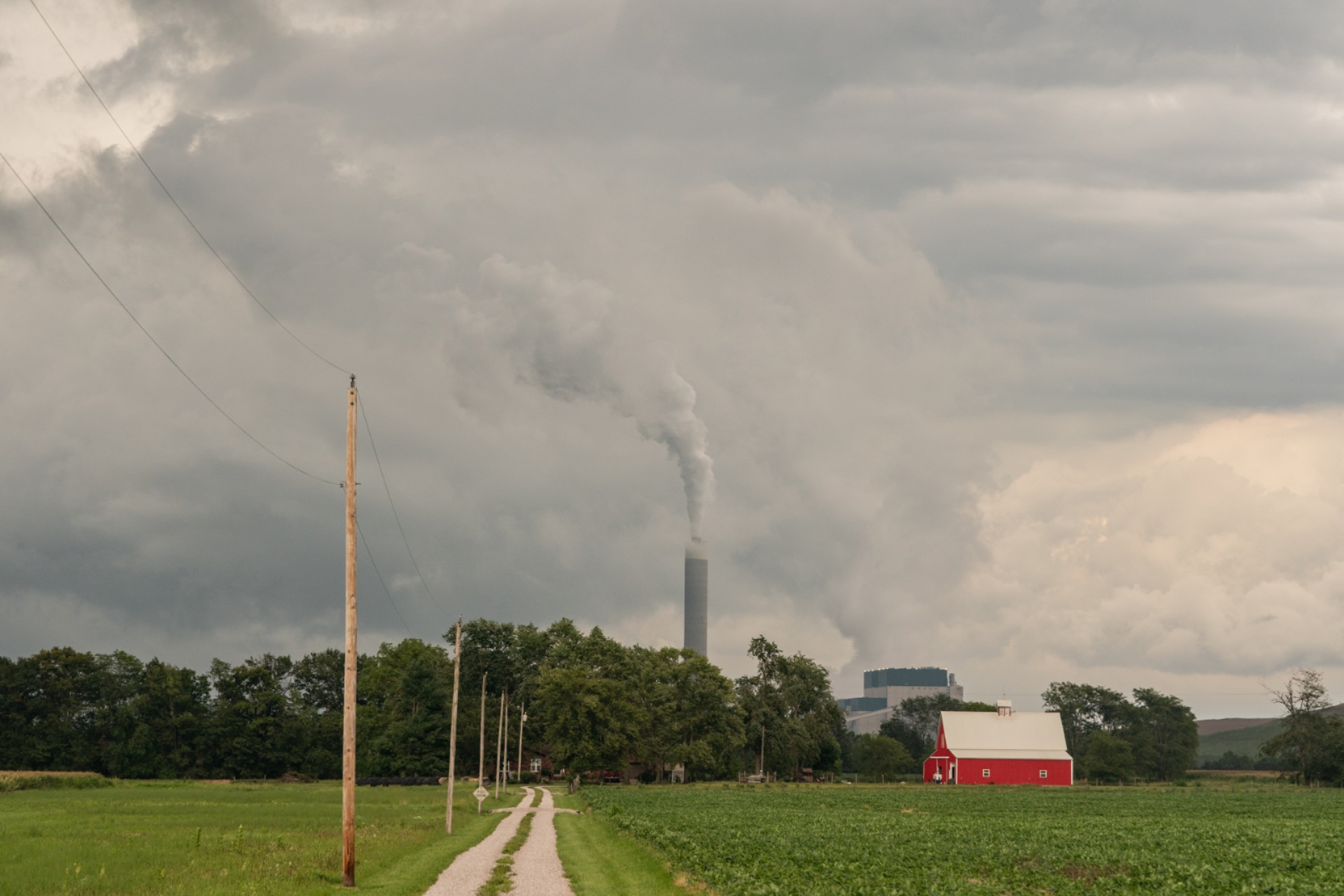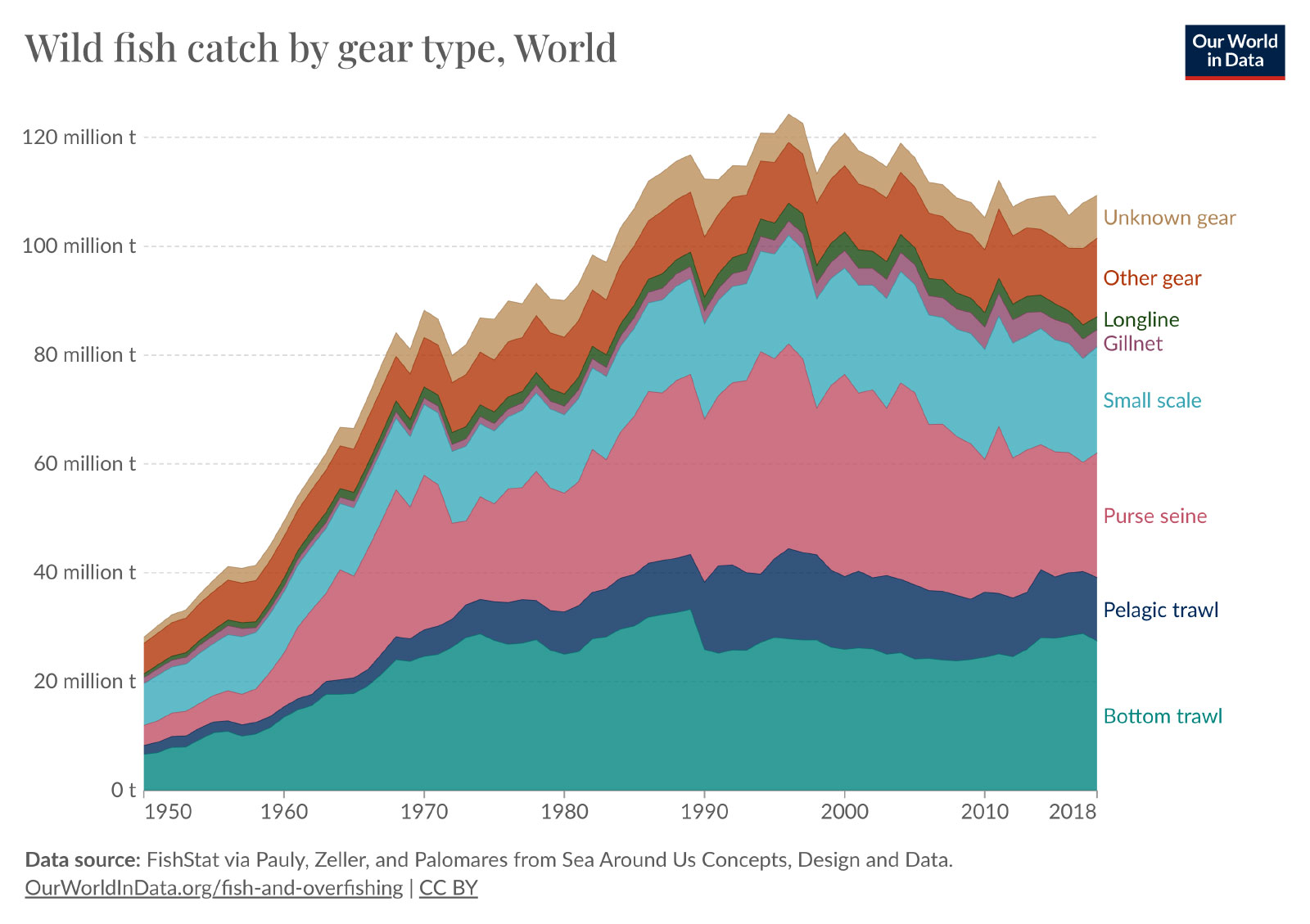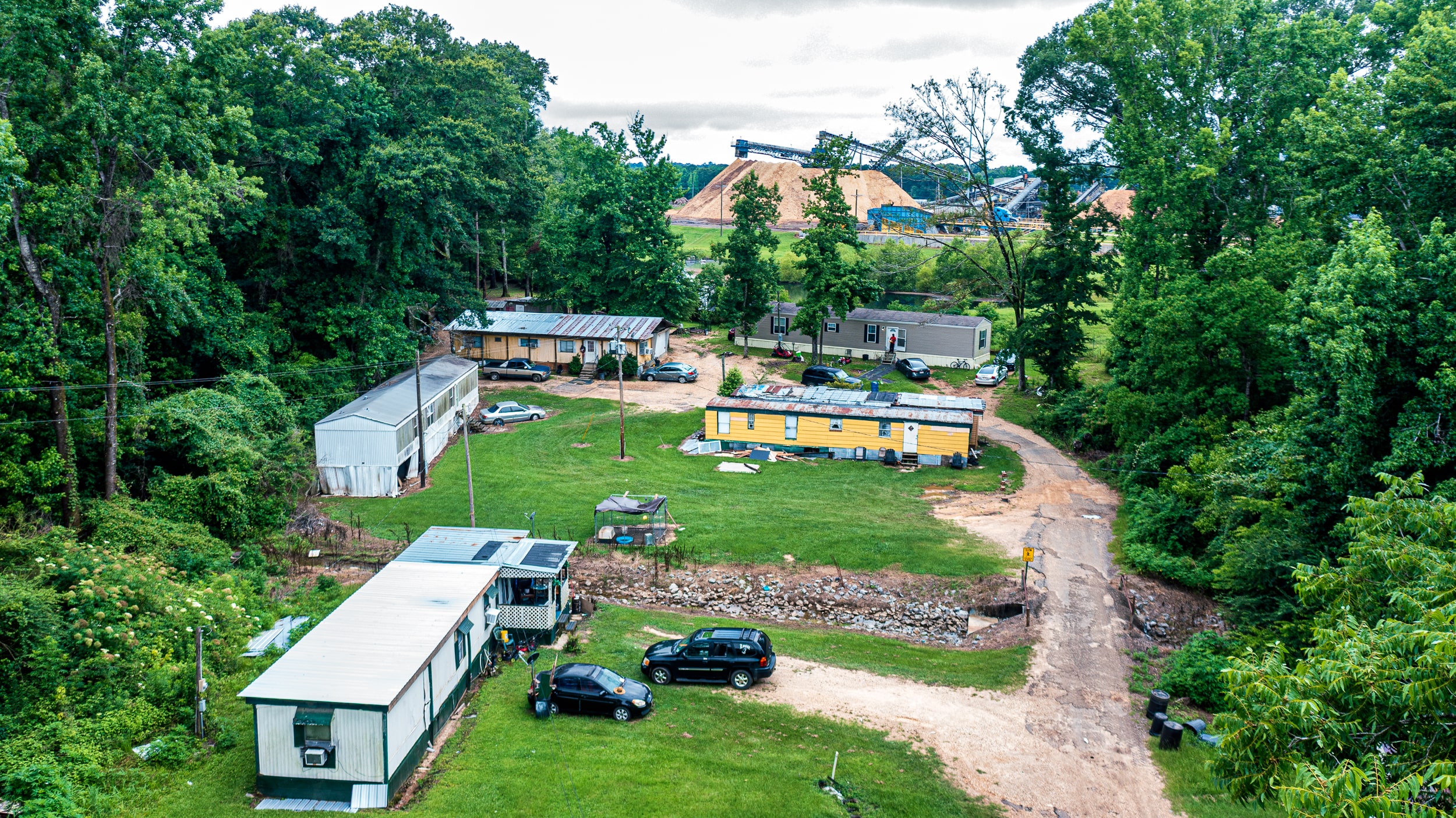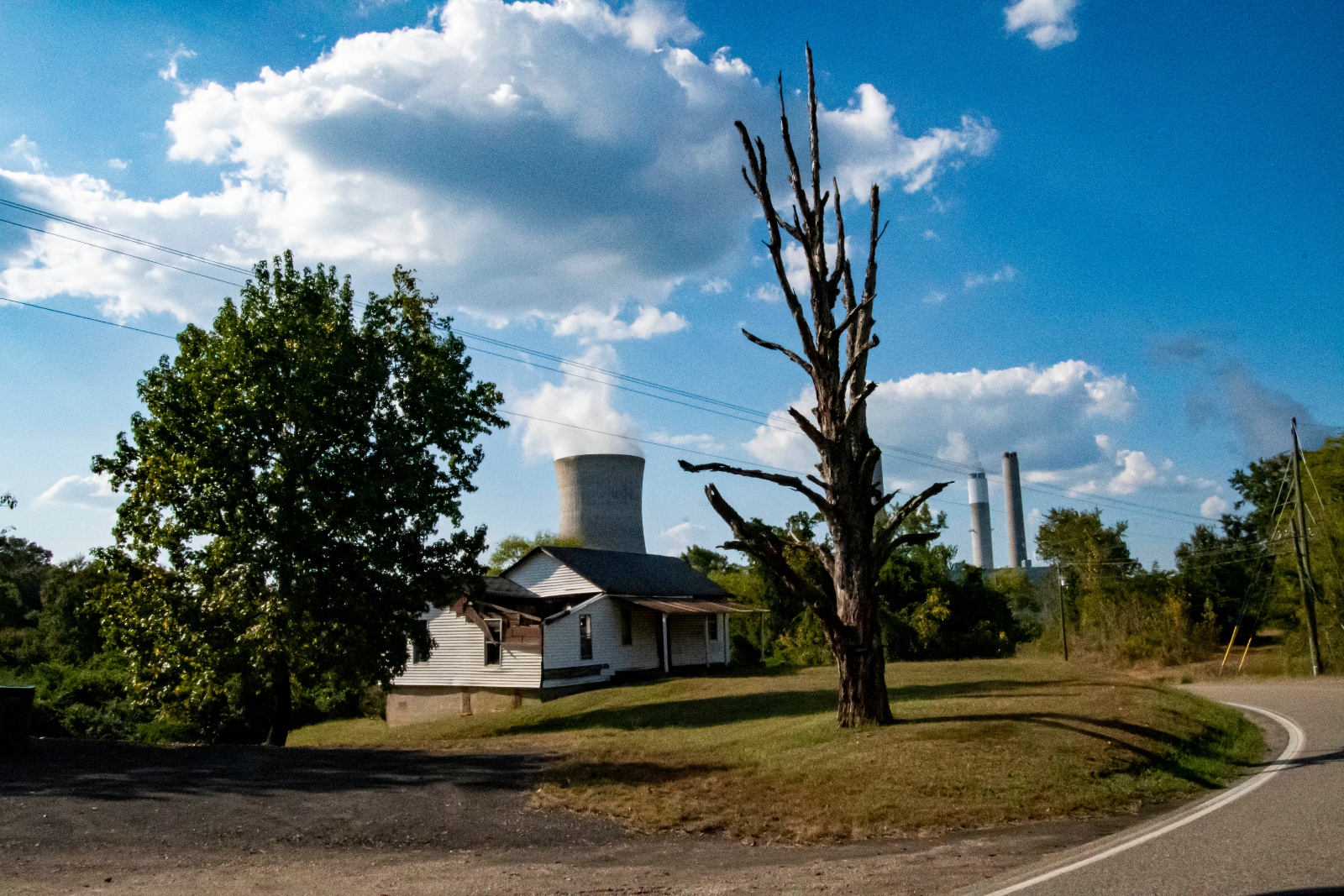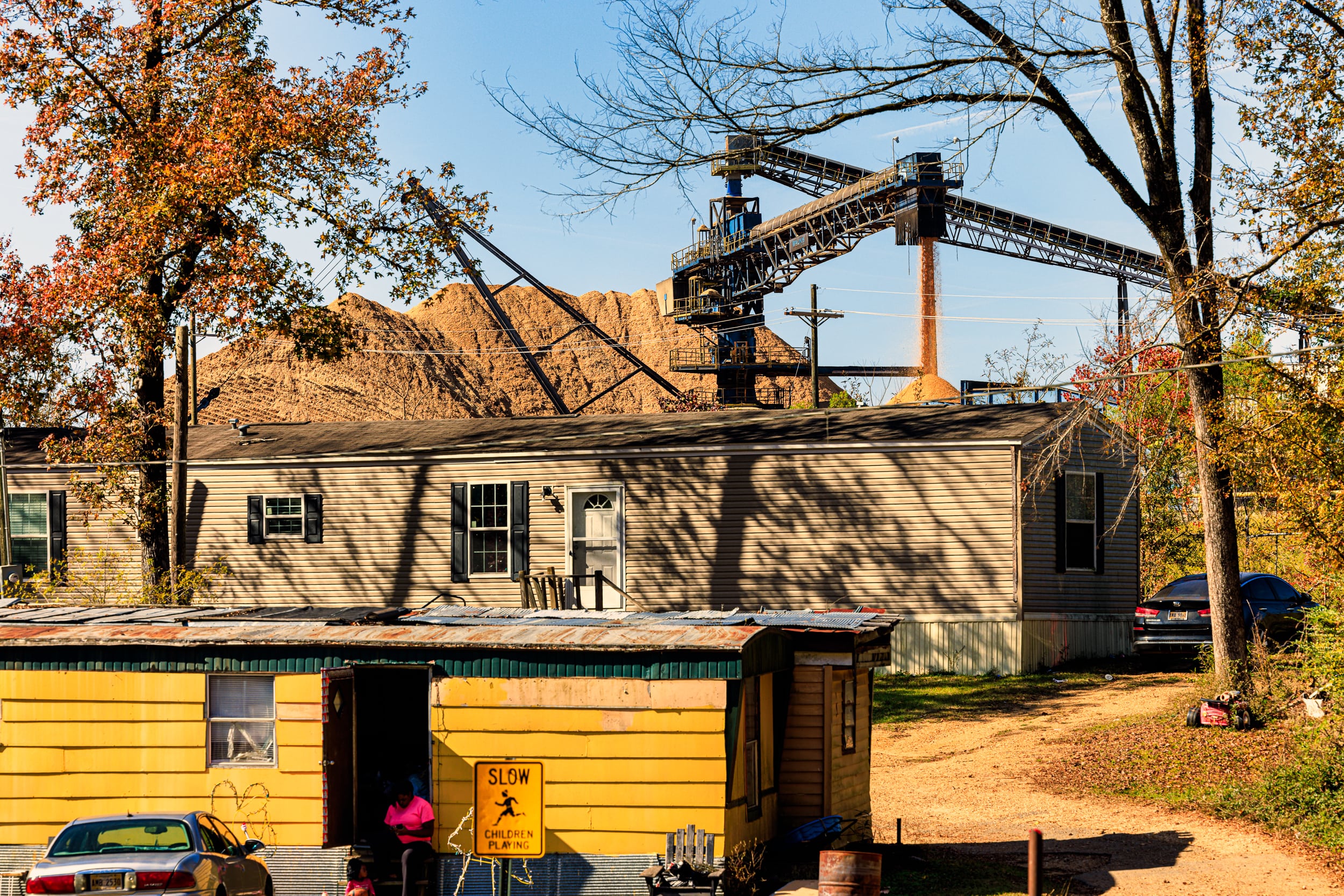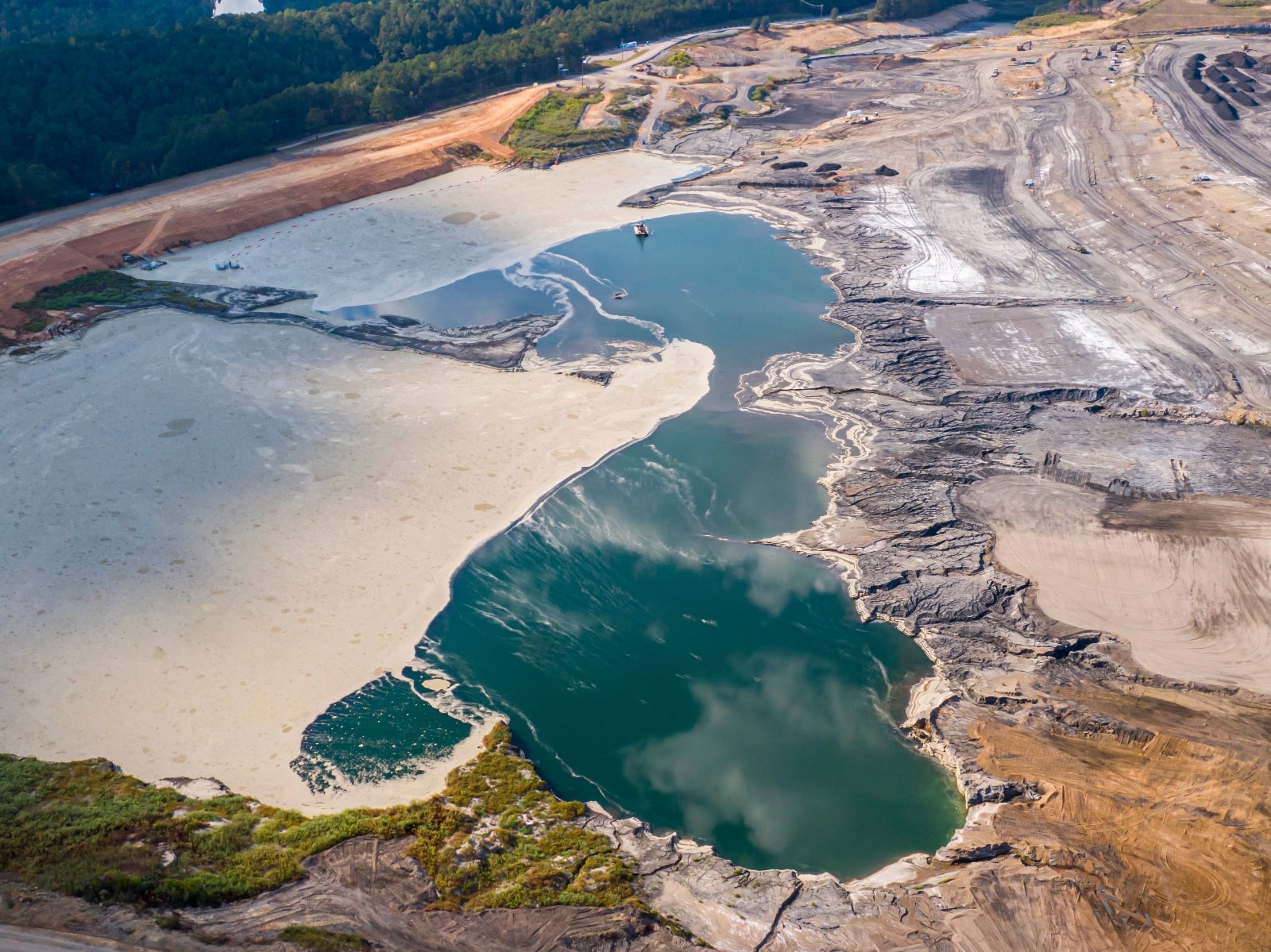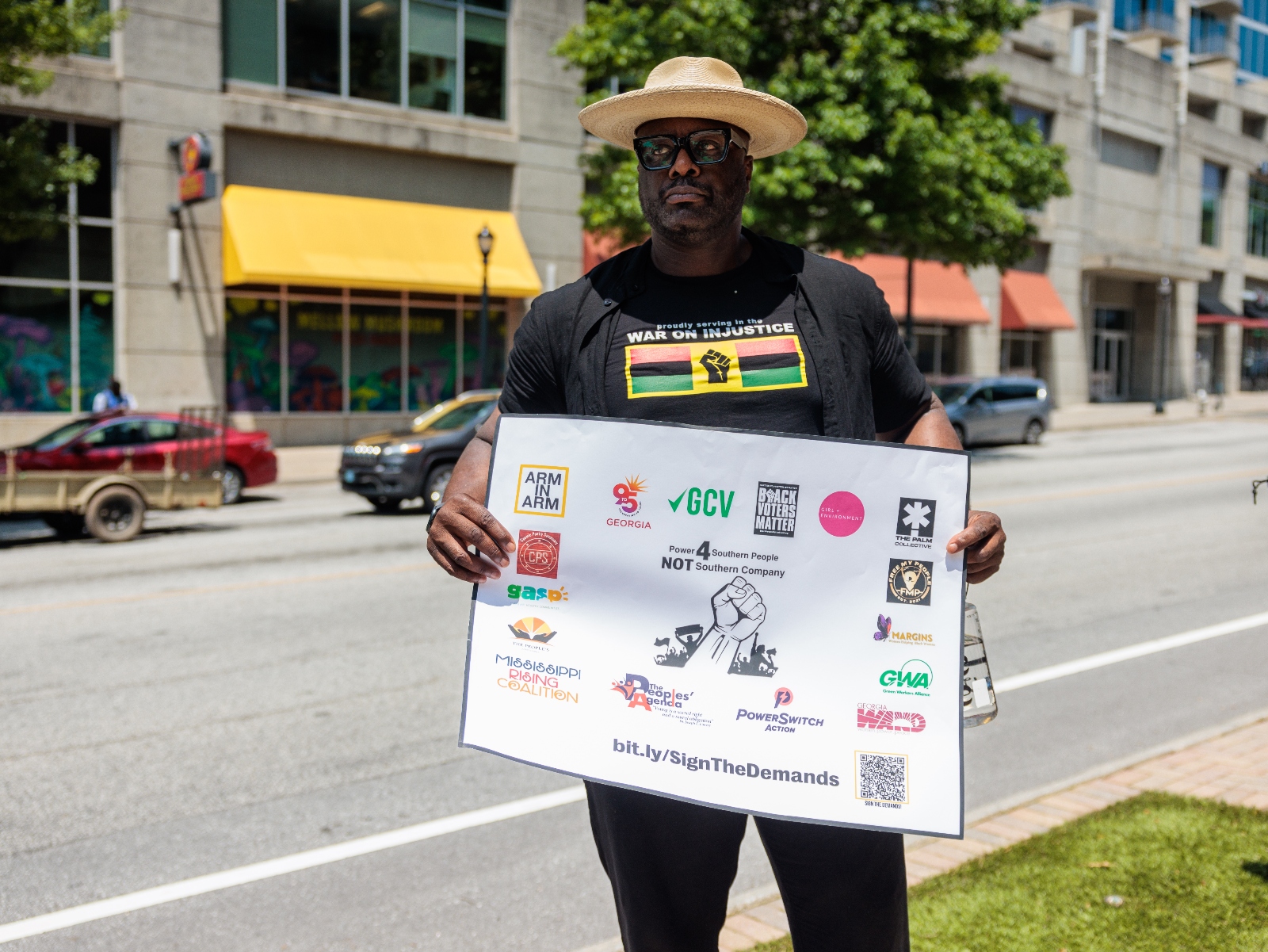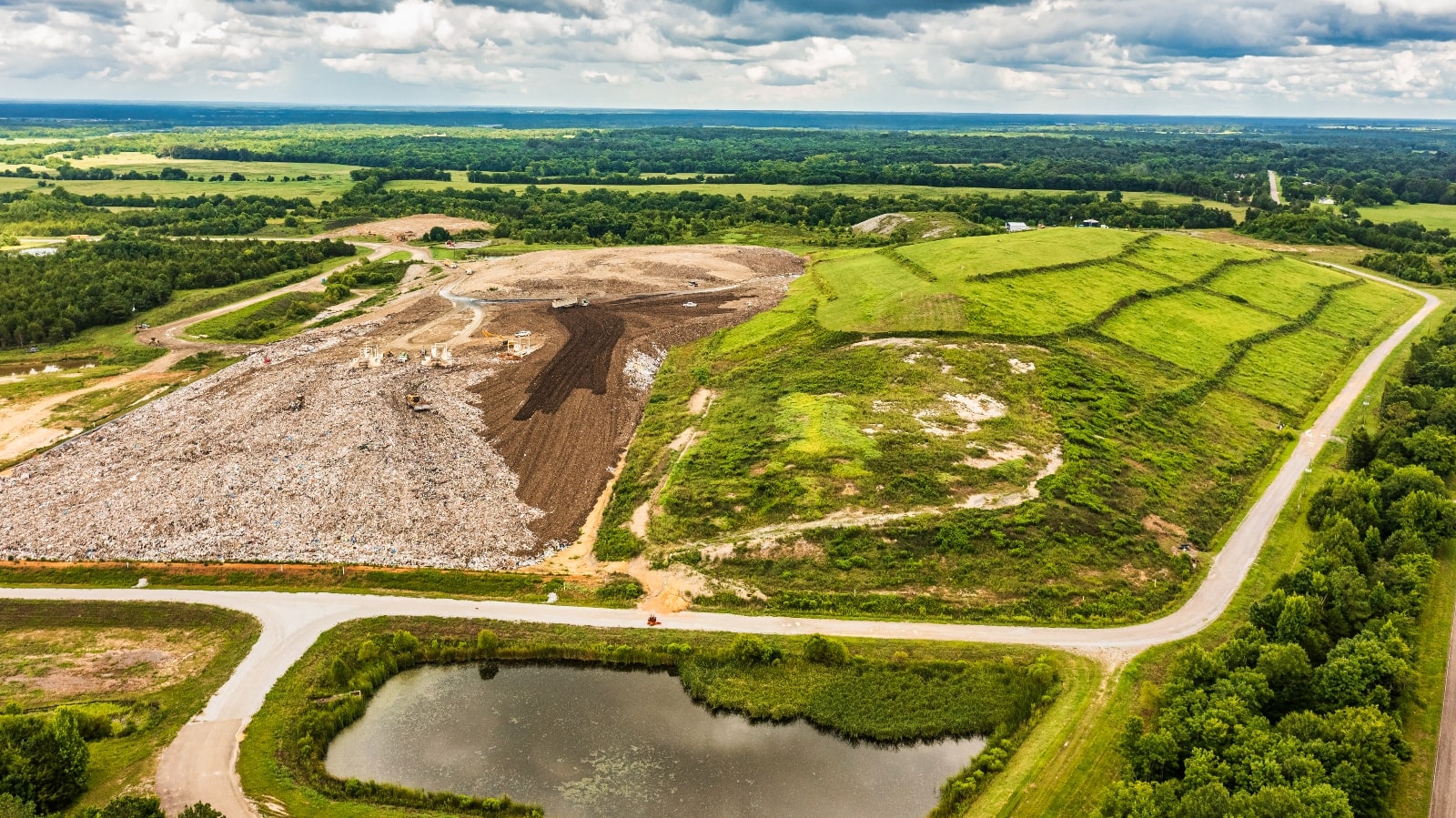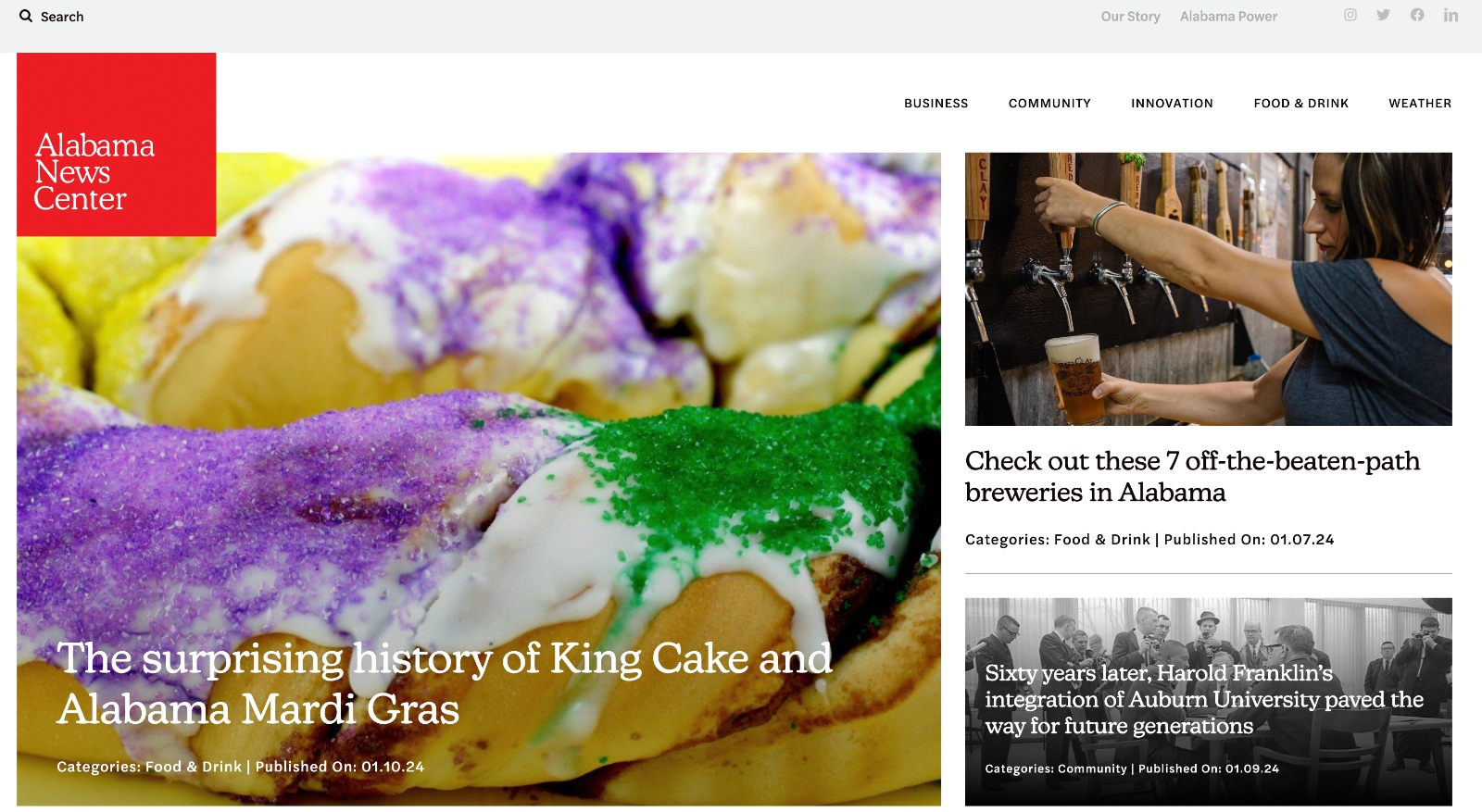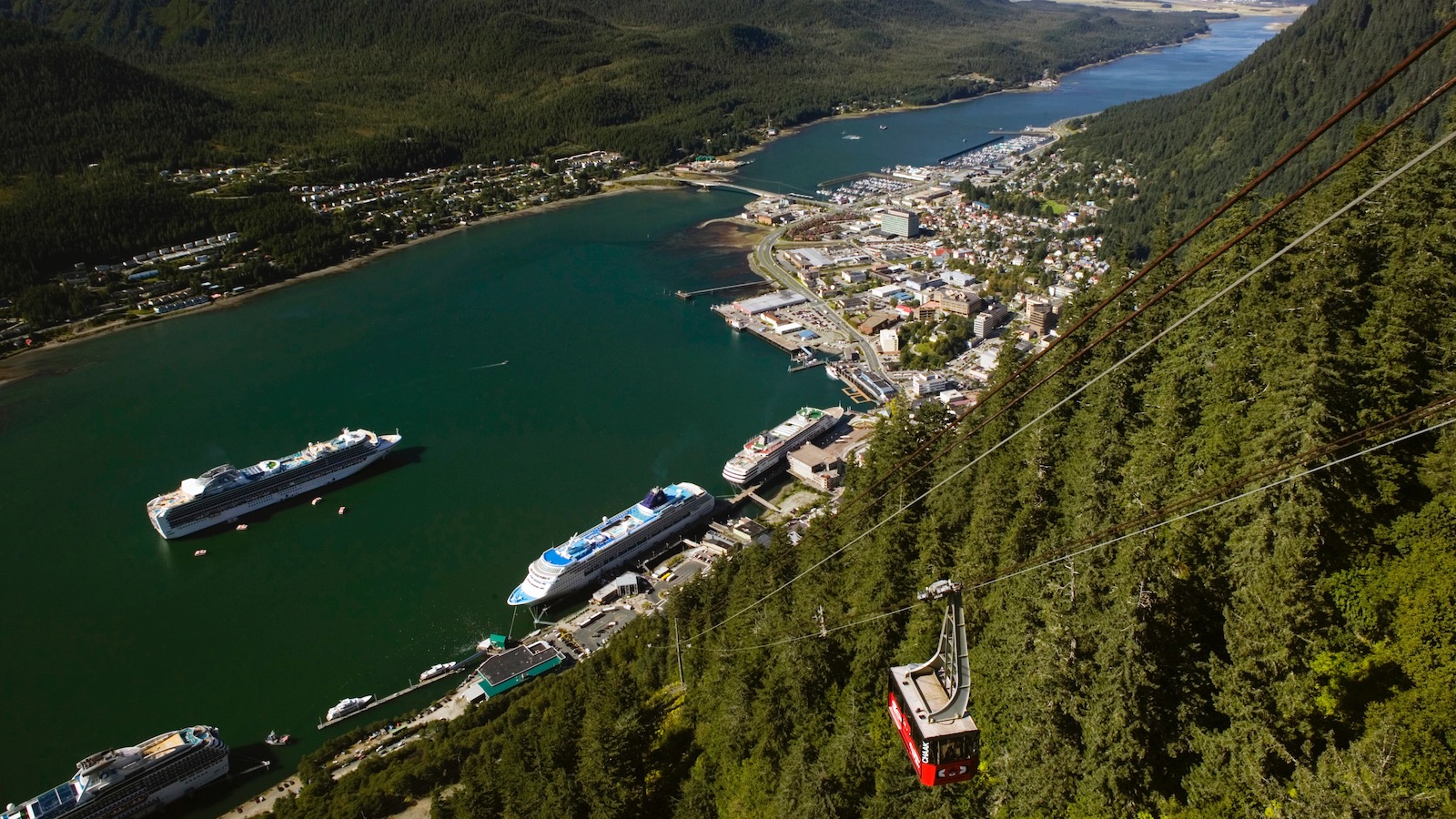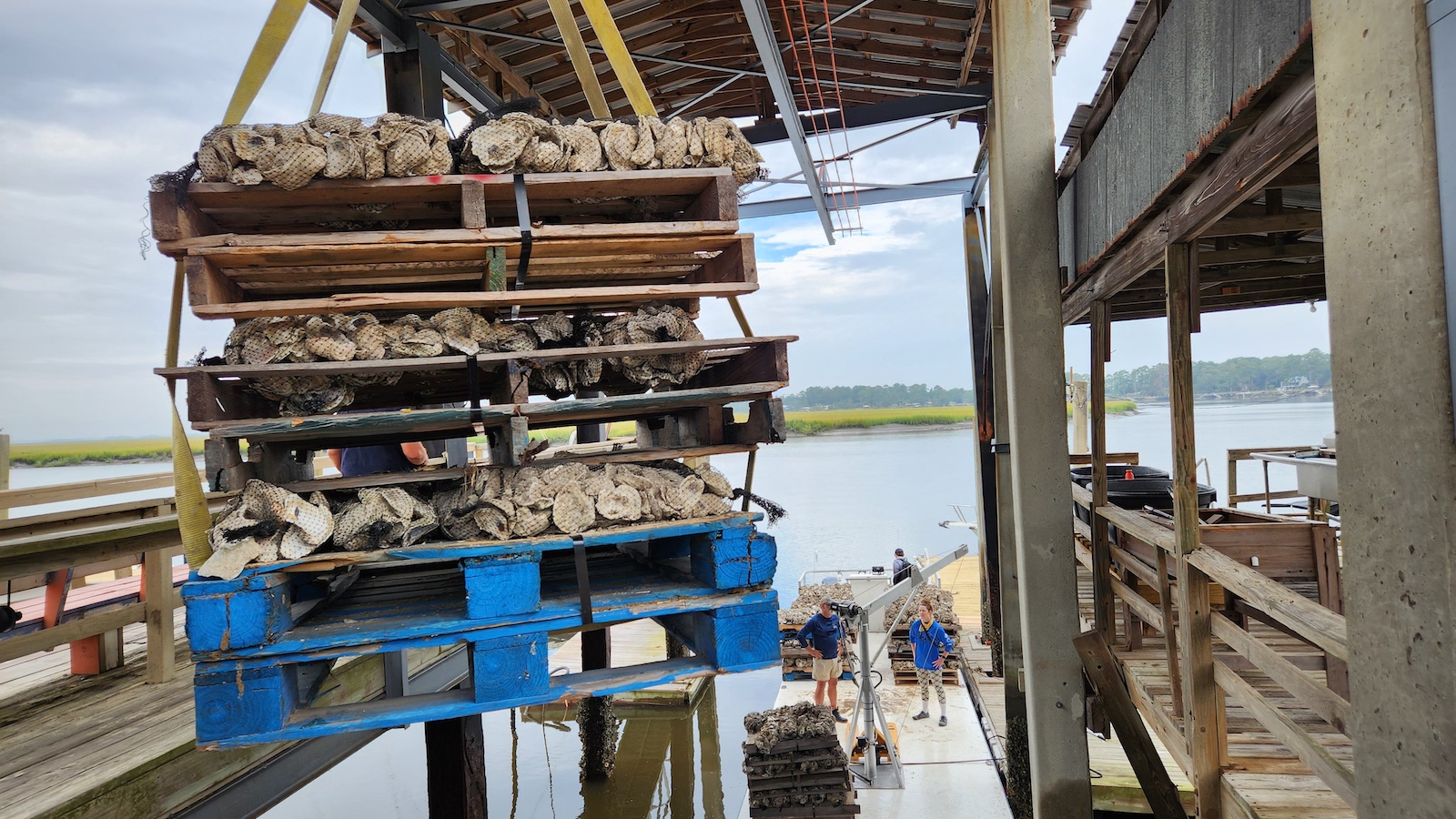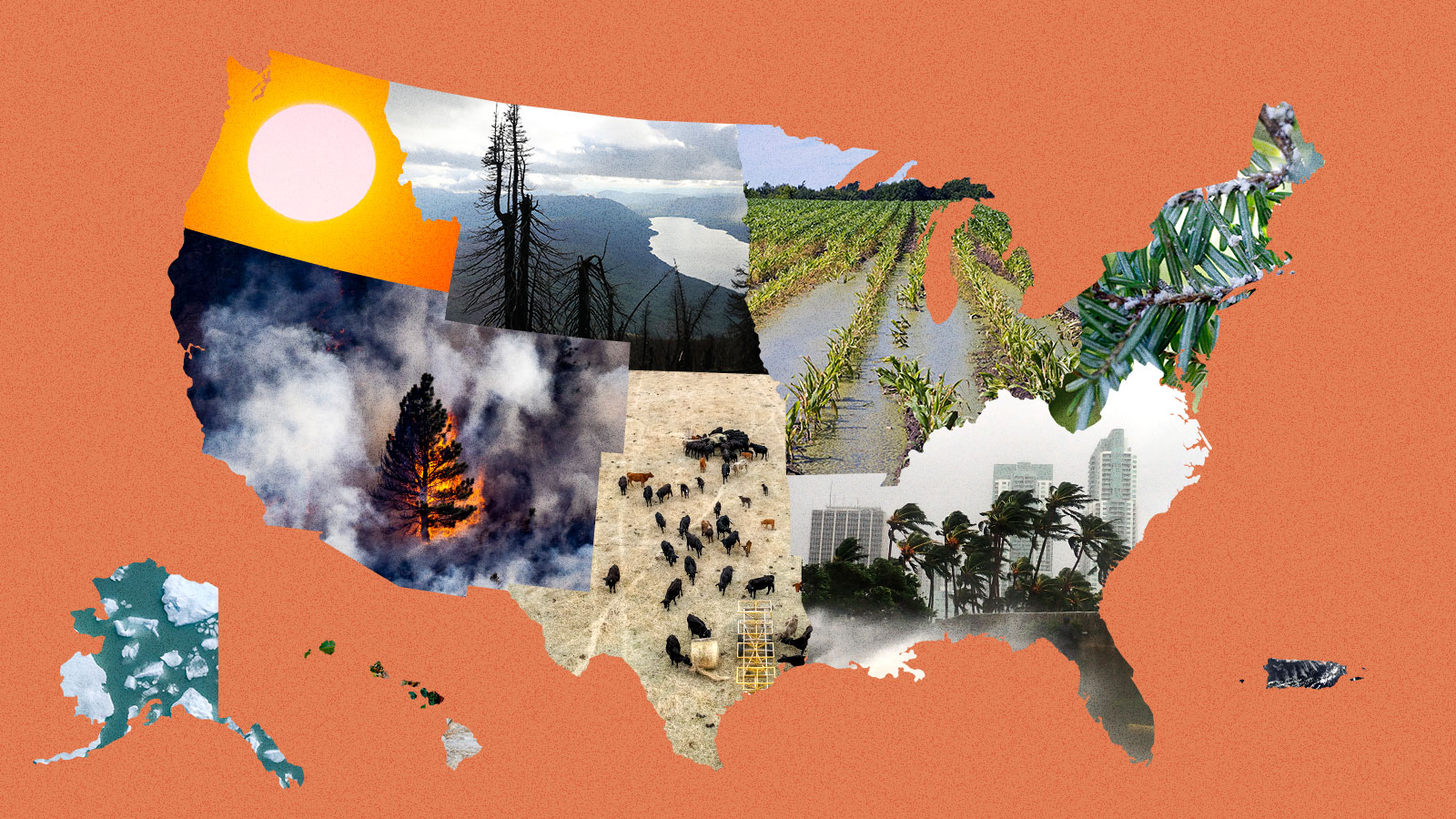Imagine 2200, Grist’s climate fiction contest, celebrates stories that offer vivid, hope-filled, diverse visions of climate progress. Discover all the 2024 winners. Or sign up for email updates to get new stories in your inbox.
The cupboards locked, the kitchen swept clean with a broom of pine twigs, the children each dressed in their one good outfit — a sleight of hand transforming a band of free-range ragamuffins into a sort of pocket-sized town council — the sun creeping down, down, down toward the boreal horizon, and at last none of us could deny it: Jonathan wasn’t coming.
So now it only remained to tell Mom.

I tried first, because I’m weak.
“Don’t you think it’s time to go get Dad?”
“Miriam, your father’s tired,” she told me. Which is one way to say dying of cancer, I suppose. She was setting the table, for the third time. “Besides, your brother will be here any minute. Then we’ll get Dad. Don’t be impatient.”
I bit my lip to keep from shouting. We had sworn a sacred sibling oath not to yell at her, but she does not make it easy.
David’s turn.
“Maybe we should get started anyway, and Jonathan can join —”
“Just wait, I told your sister —”
“Do you even know when —”
“He’ll be here —”
“Have you even spoken to him —”
“I sent a vid, he’s very busy —”
Despite my resolution, that pushed me back over the edge. I was bitterly grateful that my wife was stuck with her herds tonight; she hates to see me angry.
“You don’t even know Jonathan’s coming at all!”
“Miriam, I said I sent —”
“You don’t even know if he got it, the loons —”
And then Leo spoke.
He didn’t have to shout; he never does. It’s funny how the baby of the family became the one we all listen to.
“Mom,” said Leo. “Jonathan’s not coming.”
Silence in the house, and darkness, too, with only a sliver of sun left and the candles not yet lit.
“I’d better go get Dad,” Mom said.

The seder was my father’s domain. Everything about it was his, year after year. The seder plate was his seder plate. The molding Haggadot, spiral-bound with ancient fossil plastic, were his. Even the recipes, suitably modified for our new diets — hazelnut matzah and algae karpas — came from his family. And, of course, he was the leader of the service, reading the familiar story word for word, year after year.
This was not the first seder of his illness.
Last year, when my shrunken and sallow father had taken his shuffling place at the head of our seder table, a remarkable transformation overtook him. It was as if the winds of other times and other places filled him like an airship, and suddenly he was not a suffering, shriveled, cancer-crossed dad; he was my father from childhood, from out of every childhood, from when the world was new.
For the fourth cup of wine, for the fourth promise of G-d, he read, just like every year of my life, “I will take you to be MY people,” and deep in my bones I felt the truth of it, that I was of G-d’s people and of my father’s people —
That was the man my father was. Had been.
This was not the first seder of his illness. But it was the first seder of his death.
Dad entered the dining room, with Mom holding his elbow. He made it to his chair. He sat down.
Nothing happened.
We all sat there for a minute, in unfamiliar silence, even the children waiting for what would happen next. Dad blinked at the Haggadah Mom carefully placed in front of him. He tried to lift the first page.
It was too much for him; he let it fall.
I found myself, of course, looking to Leo at the foot of the table, and I knew David across from me was looking to the same, and my kid began to squirm, and Leo’s face as he stared at Dad showed no legible emotion at all —
“I guess I’ll read,” said Mom.

What is Passover?
David’s the schoolteacher. He’s good at explanations. Me, I don’t explain anything. I just gene-tweak mammoths.
Working as an eco-pheno-geno-biofeedback climate engineer, you get in the habit of seeing things as very complicated. Is this stand of old-growth taiga spruce a valuable carbon sink? Or is it a “bad voxel” with a dangerously low albedo compared to adjacent snowy grasslands, primed to absorb too much sunlight and turn it into heat? Or is it a useful landmark for navigating a mammoth herd? Or is that bad, because we want to lure the herd onto a different track to reduce the risk of inter-herd conflict? Or —
I write a lot of reports.
Passover is a holiday that celebrates the liberation of the Jews from Egypt and/or Passover is a collection of songs and stories and quizzes and weird little games, like a mixed-up child’s toy chest of traditions and/or Passover is when twenty million of the world’s most anxious people get to explore a fun, seasonal set of dietary restrictions in addition to the year-round ones and/or Passover is the candles, and the wine, and the prayers, and the songs, and/or Passover is a story of a marvelous escape by refugees trapped between an army and an ocean —
I write a lot of reports, and then I go in and change the mammoths. Back in the Pleistocene, extremely long biofeedback loops took care of that automatically, but these days we are on a tighter timetable. So I made the mammoths snow white; that was me. The genetic sequence from polar bears is very well characterized and it takes transcription easily. A white mammoth absorbs less sunlight; the glittering fur reflects more heat back into space. Every good voxel counts.
What is Passover?
Basically, you get all your family in one room, deny everybody food until you’ve made it through a two-hour interactive lecture, while constantly drinking more and more wine, and then act surprised when a fight breaks out.

“Mom, don’t you think —” said David. But she hadn’t listened to him for forty-two years; why would she start now?
“Now in the presence of loved ones and friends, before us the emblems of festive rejoicing —”
She was off. What could we do? We read along, all of us chorusing in unison, siblings, spouses, kids, even Dad managing to mumble.
“Remember the day on which you went forth from Egypt, from the house of bondage —”
And what do you know, she was good.
It was a little cynical, perhaps, to judge my own mother’s reading of the seder strictly on its theatrical merits, but surely we Jews have earned our cynicism. And she was good. Deep voice, solid rhythm. Kept good time in the group readings and didn’t interrupt my kids when they stumbled over the longer, more ornate words and transliterations. I didn’t have to hate this.
So long as I kept my eyes off of Dad.

“Seder,” in English, literally translates as “order.” Nevertheless, our family never reads the Haggadah in the official order. Instead, the whole thing is held together by a complicated web of bookmarks and marginal notes. It’s not the original system, but it works.
That’s why, not twenty minutes into the seder, between the first and second cups of wine, we got to Elijah.
There’s a superstition about Elijah. You leave an extra cup of wine out for him, and then you send the little kids to open the door for Elijah. Then one of the adults sneaks the glass of wine, or secretly rocks the table, and, Look, kids, it’s Elijah, he’s drinking it!
In the Book of Kings, Elijah smites four-hundred pagan priests with fire from heaven. In the Haggadah, he plays a silly little haunted-house drinking game with kids. Being a grown-up is like that, I think.
“May the All-Merciful send us Elijah the Prophet to comfort us with tidings of deliverance,” said Mom. “Now let us open the door for Elijah.”
David and my kids knew their parts, and they ran, all in a giggling mob, to the front door to fling it open —
And they screamed.

The man at the door did look like Elijah. He was tall, and gaunt, and bearded. He was bundled for the taiga, not the deserts of the Holy Land, but his clothes were stark and worn. One arm was tied up in an impromptu sling.
I must have run for the door when the kids screamed; we all must have. I don’t remember; I never remember running to my kids. I just remember staring, and staring, and staring at the man in the door.
It had been years. There was no reason that the kids should recognize their uncle Jonathan.

Mom bustled Jonathan in the door and she bustled the door shut. She bustled him out of his traveling clothes, and she worried over his injured arm so much that she almost fainted. She ran back and forth with ever-increasing energy and declining effectiveness until Leo stopped her.
He got her back into her chair at the head of the table, got Jonathan seated at the foot beside him. Dad had not stood up to greet Jonathan; I did not know if he understood that Jonathan had been gone and now he was back. I didn’t know.
David asked Jonathan about his arm. “Grolar bear attack,” he replied.
It wasn’t surprising. We’ve been driving up the population of grolars for years now. Larger apex predators produce upward cull pressure on herbivore size, which increases winter survivability and population throughput, ultimately allocating more biomass to the mammoths overall. But push it up too hard, though, and you kick off a predation double-bust, which throws your whole cycle out of whack —
Systems are complicated.
The kids were probably desperate to ask Jonathan about the grolars, but they were still scared of him, and he didn’t seem inclined to talk much. So I didn’t ask any follow-up questions, and neither did David.
“Mom,” said Leo, “keep reading.”
Jonathan started in his seat, turning to Leo. “Dad reads,” he said.
Leo did not turn to face him. They had been so close, before, the baby of the family and the eldest; Leo had idolized Jonathan. Jonathan was the sort of man Leo had always wanted to be, since long before the rest of us even knew he would grow into one. But then Jonathan vanished. No surprise Leo took it hard.
“This year Mom reads,” he said.
Jonathan looked at Leo. Looked at Mom. Looked at Dad. Looked away.
In a dining room crowded for seder, it’s hard to find somewhere to look that’s not another watching face, but he managed.
Mom was still staring at her prodigal son, drinking in his face, but Leo managed to catch her eye and gave her a firm nod, and she started reading again.

Passover is a child-friendly holiday. Not really the story of the Exodus itself, which has an unavoidable infusion of the Bronze Age macabre — drowned babies, Moses beating and killing an overseer, blood on the doorpost, spontaneous death plague — but certainly the seder is. The songs have an easy nursery-rhyme simplicity. The ritual food appears in handy sandwich format. The children have dedicated readings; ”Ma Nishtanah” — “Why is this night different from all other nights?” — is traditionally sung by the youngest child present.
But the Four Children is not, I think, exactly child-friendly.
It’s an odd little bit of text, a piece of Talmudic psychological gristle undigested by medieval pageantry or modern bowdlerization. It notices that the Torah commands us to teach our children the story of Passover four distinct times. Now, a mammoth geneticist would see that reduplication as merely a healthy copy-error redundancy in an inherited text, but the rabbis of the Talmud thought differently. They thought that every word was a perfect, unique gift from G-d.
So they said that four commandments meant four different ways to teach; four different archetypal children. The good child, the wicked child, the simple child, and the one who does not even know how to ask. Each of them receives a different instruction.
The passage is child-unfriendly, not through sex or violence but rather through its crushing essentialism. These days we tell our children, “You can be anything you want to be.” These days we tell them, “You live in a special time, an important time, when there is so much work of tikkun olam, of repairing the Earth. So much work, so many jobs — from rewilding the rainforest to herding mammoths! — and one of those jobs out there is just for you. Just as special and unique as you are.”
But our sages teach us: There are four children. Kiss-ass, shithead, stupid, and double stupid.
In my family there were four of us, too.
Don’t imagine that we missed that part.

In the end, it was simple bad luck.
Most of the readings in our Haggadah are delivered solo by the leader, or together by the entire table. But the Four Children is tagged with that most perilous note, “A Participant.” Which means we go around the table, clockwise.
I had the wise child. That gave Leo the wicked.
“The wicked person says, ‘What is this observance to you?’ Because they say ‘to you’ and not ‘to us,’ they reject the unity of G-d and the community of Judaism. To them we respond sharply —” and suddenly Leo was looking at Jonathan, staring at him, teeth flashing as he bit out words, “it is because of what G-d did for me when I went forth from Egypt, for by abandoning us, you would not have known redemption.”
Time for the chorus, and David and I leapt in, “the wicked one withdraws themselves from anything beyond themselves —” and Mom was reading along, and the kids were doing their best, and even Dad was gamely mumbling, but Jonathan didn’t say anything. Neither did Leo.
We trailed off, a comet tail of phonetic rubble. Jonathan’s turn now, but he still wasn’t saying anything. His Haggadah lay open on the table, still open to the page of the wicked child.
“Jonathan,” I said, in the gentlest voice I could manage. “It’s your turn.”
My older brother has never listened to me.
“I don’t deserve this,” Jonathan said to Leo.
All across Leo’s face I could see pain congealing into anger.
“Of course you do,” Leo said. “You left. One day, you just got it into your head to leave us.”
“No,” said Jonathan. “Dad told me to go.”

Jonathan left us when he was nineteen. There was no warning.
He’d been fighting with Dad more. I think. It was hard to tell. Jonathan and Dad both had a strange, oblique way of arguing. Nothing like me or David or Mom. Just a coldness that settled between words, between actions, that froze the ground and then kept it frozen. And then one day he was gone.
Leo was fourteen; he’d come out a year and a half earlier. (He’s the only Jew I know who’s had both a bat and a bar mitzvah. Good timing.) When Jonathan left, Leo felt abandoned by his brother. He was devastated.
But the rest of us were hurting, too.
It’s a big world out there, and we lived at the very farthest edge of it. I understood that. I could imagine how Jonathan might want to see something different than tundra, tundra, tundra, mammoth. I could imagine how Jonathan might want to escape from the cold in our house and the cold in our family. I could imagine lots of things.
I had to imagine, because he never videoed, never even DM’d.
There’s internet service at the house, at least when the loons — network-relay balloons, high up in the stratosphere — form a tight enough chain. These days that’s most days, since they keep putting them up in the stratosphere. Shiny mylar, amazing albedo. Very good voxels. Back when Jonathan left, two decades ago, the service was less regular. But he could have at least DM’d.
He never did.
Well, he never DM’d me.

“What?” said Leo.
“Dad told me to go.”
“Just because he threw you out of the house didn’t mean you had to leave the continent!”
“No. It wasn’t like that. He sent me back.”
“He what?”
Mom broke in. “You two can catch up later. The simple child —”
Leo stopped her with an outstretched arm.
“Dad sent you? Why? Where?”
Jonathan shuffled uncomfortably in his seat. He was a big man, even if thinned out from his taiga journey home, but he seemed all at once to collapse in on himself.
“I dunno. Ask him.”
Leo’s eyes narrowed. He turned to look at Dad.
Dad stared blankly back at all of us. He blinked. He licked his lips. I do not know if, at that moment, he could have counted his own children.
“Well?” said Leo. “Where did you send him?”
Dad blinked again. “The simple child asks, ‘What is this?’ To them —”
“Where did you send Jonathan, Dad?”
“… we say, ‘With a mighty arm’ —”
“Where did you send Jonathan?” Leo’s voice was louder than I’d heard it in years.
“‘… G-d freed us’ —”
“Where did Jonathan go?” Leo was shouting now, hands flat on the table.
“‘… from the house of bondage.’”
“Where, Dad!”
“Texas,” said Mom. “He wanted us to go home.”

“Dad’s not from Texas,” said David.
“Home is here,” I said, at the same time.
It’s hard to say which one of us Mom looked at with greater contempt. But she loved Leo, and she spoke to him.
“We never told you,” she said. “We didn’t want you to know.”
“Dad’s not from Texas,” said David. “We’re not from Texas. If we were from Texas —”
“You didn’t move here,” I said. “You were sent.”

Jewish history is a litany of expulsions. First exile, second exile. The Roman diaspora. The Spanish Inquisition. The Khmelnytsky Uprising. The pogroms. The Holocaust. These episodes enter gentile history as genocides, as exterminations, and this is not inaccurate. But the Jews of a later era are descended from survivors, and survivors fled. They knew when to flee, and how fast to travel.
The story of the Exodus is perhaps not a surprise.

“You could have told us,” said David. “There’s no shame in it. Half of my class’s parents are from Texas — they made new lives, they raised families, they talk about it —”
“Yes,” said Leo. “They talk about it.” He was still staring at Dad. Dad blinked aimlessly — and blinked again, with sudden recognition, and said, quite clearly and distinctly, “Jonathan.”
Silence at the seder table.
“Jonathan,” he said again. But he was not looking at his oldest son; he was looking at his youngest.
“Yes, Dad,” said Leo, quietly.
“Jonathan, you’re back.”
“Yes, Dad,” said Leo, and beside him Jonathan mouthed the same words.
“Jonathan, did they forgive me? Can I go home?”
Leo clenched his jaw, his fists. He turned to his older brother.
“No, Dad,” said Jonathan. “You can’t.”

What happened in Texas was complicated. Drought in the Rio Grande. Crop failures across the Great Plains, from Nuevo León to Iowa. Mass migration along several distinct axes. Dismemberment of the petrochemical industry. Rocket riots over Project Sunshade. Paramilitary violence and military violence.
System failures are as complicated as systems themselves.
But not everyone who left Texas was a refugee.

“They took me to a museum,” Jonathan said. “I marched in and applied for family repatriation, and they looked my name up on a list and said, ‘You’d better come with us.’ And I thought —”
I do not think I had ever seen my brother cry before. Nobody needed to ask him what he thought.
“But I went and they showed me, Dad. The Hall of Exiles. They have a museum and you’re in it. They have the drone cams and the SWAT group chats and the interoffice wiki. Dozens of people died in that holding cell —”
“Hot summer,” said Dad. He sounded ancient. He sounded like a boy.
“You had water and you didn’t give it to them.”
“Such a hot summer,” said Dad. “They just kept coming.”
“A new king arose over Egypt,” I said, “and he said, ‘Look, the Israelite people are too numerous for us. Let us then deal shrewdly with them.’”
“Hottest summer of my life,” said Dad. “Nothing like here.”
“Then why did you send me back?”
Dad stared, for a long time. His jaw went slack.
“I want to go home.”

We couldn’t get anything out of Dad after that. He went back inside, to where that metastatic shadow-self was eating him.

The next day, out on the range with my wife, checking in on the pregnant mammoths and tagging the youngest calves, telling her the story, I could not believe it didn’t end right then. But the truth is, we kept going. None of us were ready for the seder to end.
We drank all four cups of wine. We counted out the plagues. We ate algae karpas and horseradish from the backyard. The kids hid the hazelnut afikomen. Leo hugged Jonathan. Jonathan hugged Mom. The mammoth brisket was delicious. We sang “Dayenu,” because even a single miracle would have been enough.
Out on the range with Thea, I thought about my parents’ lies. About my father’s crimes. About fleeing, and being sent.
When a loon is near, I could look up my father’s trial. I could dig up his conviction in an old database. I don’t need to, though. The sentences were all the same. Climate remediation for the remainder of natural life. Forty years in the desert.
Those sentenced ended up all over. The olam is wide, and there’s more than enough tikkun to go around. “It is not your duty to finish the work, but neither are you at liberty to neglect it.”
The world is very complicated, and sometimes when I try too hard to understand it all I get confused. Which is why I’m grateful for my wife.
She gets up in the morning. She puts her feet on the permafrost. She tends to the mammoths.
To me, those animals are 5.8 billion genetic base pairs locked in a chaos cascade with maybe half a trillion other ecological variables, bending the curve of an ecosystem away from catastrophe. That’s what I write in my reports.
Thea doesn’t think about them that way. She puts her hands on a snowy, furry flank; a trunk wraps around her shoulders. That’s enough.
So I told her the story, all of it, and I waited at the end for her insight. And because she’s wiser than I am, she waited instead for me. And I realized: I know how the story ends. The same way it always does: l’shana haba’ah b’yerushalayim.
Next year in a more just world. Next year, in the city of peace.
Louis Evans (he/him) has been going to Passover seder at his Papa and Bubbe’s house since the year he was born. He is a writer living and working in Brooklyn, New York. His science fiction has appeared in Vice, the Magazine of Fantasy & Science Fiction, and Nature: Futures. His climate fiction has appeared in Analog Science Fiction & Fact, Little Blue Marble, Fusion Fragment, and more. He’s online at evanslouis.com.
Mikyung Lee (she/her) is an illustrator and animator in Seoul, South Korea. Her poetic and emotional visual essays focus on the relationships between people and objects, situations, and space.
This story was originally published by Grist with the headline A Seder in Siberia on Jan 22, 2024.




